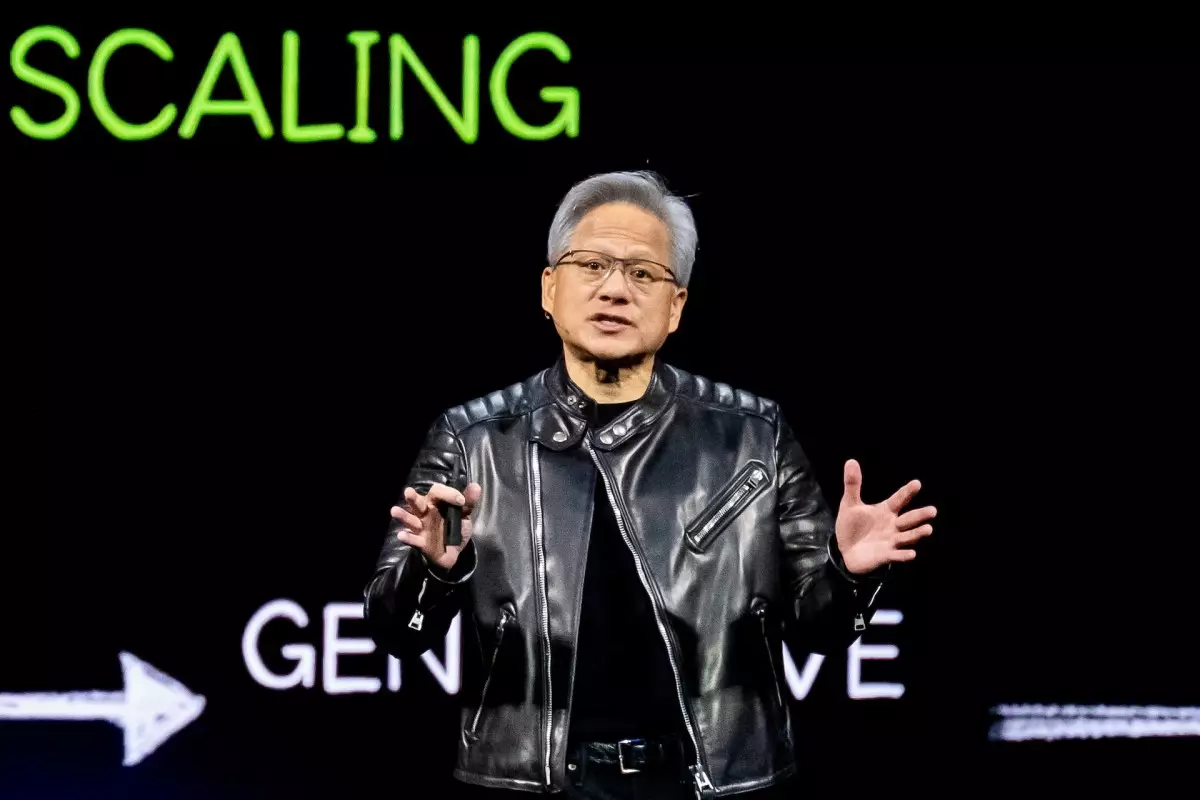In a strategic pivot towards enhancing its manufacturing capabilities domestically, Nvidia has unveiled plans to construct and operate over a million square feet of dedicated facilities in Arizona and Texas. This initiative is not just a reaction to global supply chain challenges but also a well-calibrated attempt to secure Nvidia’s place at the forefront of AI technology. By relocating a significant portion of its chip production to the United States, Nvidia aims to fortify its supply chain resilience, meet escalating demands for AI chips, and cultivate a robust industrial environment conducive to innovation.
Nvidia has successfully begun production of its advanced Blackwell chips at TSMC’s manufacturing facilities located in Phoenix, Arizona. The announcement highlights a newly established partnership with prominent local manufacturers, namely Amkor and SPIL, focused on the essential stages of packaging and testing operations. Simultaneously, plans for supercomputer manufacturing facilities in Texas are underway, with collaborations involving major players, Foxconn in Houston and Wistron in Dallas. According to company forecasts, mass production from these Texas facilities is anticipated to gather momentum over the next 12 to 15 months, signifying a monumental leap in local chip manufacturing capacity.
The Economic Implications and Job Creation Potential
Nvidia’s CEO, Jensen Huang, articulated a clear vision of U.S. leadership in the burgeoning AI infrastructure landscape. “The engines of the world’s AI infrastructure are being built in the United States for the first time,” he proclaimed. This assertion seeks to reassure stakeholders of the significant economic impact that this initiative could have, projecting the potential to generate hundreds of thousands of jobs and instigate trillions of dollars in economic activity over the next few decades. The implications of such manufacturing growth could indeed reshape the landscape of the tech industry, creating a symbiotic relationship between job growth and technological advancement.
Moreover, by anchoring manufacturing on American soil, Nvidia is poised to foster a self-sustaining ecosystem, whereby the symbiosis of advanced manufacturing and skilled labor could elevate the U.S. semiconductor industry. However, as inspiring as this vision may sound, the road ahead is fraught with challenges that could hamper Nvidia’s ambitious projections.
Facing Off Against Glaring Challenges
Despite the optimism, Nvidia’s manufacturing ambitions encounter formidable hurdles. The complexities of international trade relations, particularly with China, pose a significant threat to accessing the raw materials essential for chip production. Retaliatory tariffs and trade restrictions could jeopardize raw material supply chains, hindering timely production and cost management. Additionally, a critical aspect of this shift to domestic manufacturing—an adequately skilled workforce—remains woefully deficient. The industry is in dire need of skilled frontline workers capable of adapting to the sophisticated requirements of modern chip assembly.
Furthermore, Nvidia’s move is inevitably entwined with political nuances. Recent maneuvers by the Trump administration, including the controversial threat of a 100% tax levied against companies that do not establish manufacturing bases in the U.S., illustrate the complex interplay between business and politics in this sector. This pressure has led various firms to pivot towards American-focused initiatives, recognizing the political weight behind domestic manufacturing promises. Still, such tactics raise questions regarding the long-term sustainability of these partnerships and the stability of proposed policies.
Looking Ahead: Nvidia’s New Era
In an environment where governmental support seems to sway like a pendulum, Nvidia is navigating a landscape that may be riddled with uncertainties. The narrative surrounding the Chips Act, designed to incentivize semiconductor manufacturing through significant financial investments, reflects both opportunity and risk. The potential erosion of this act could deter further engagement from industry giants that might otherwise contribute to a domestic semiconductor renaissance.
All things considered, while Nvidia’s ambitious plans to instigate a manufacturing revolution in AI chips might appear utopian, the realities of execution will undoubtedly test the mettle of such aspirations. The success of this initiative may hinge on the ability to navigate existing geopolitical tensions, foster local talent, and adapt swiftly to the ever-changing demands of the tech landscape. The stakes are high, and the outcome could redefine the future of American technology in a global context.

